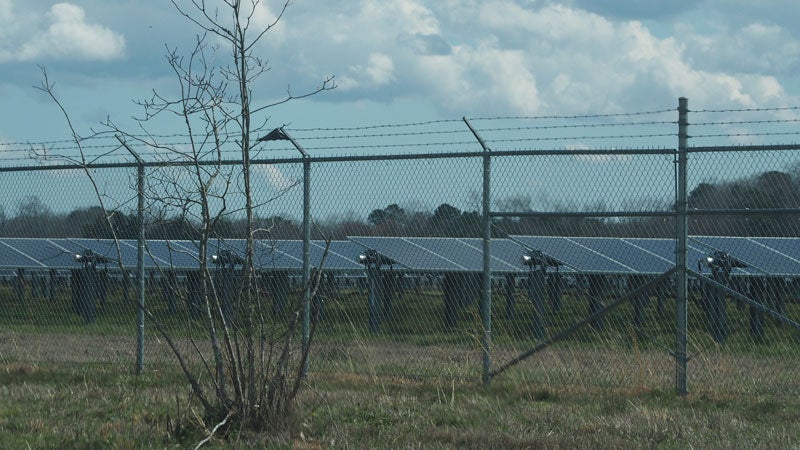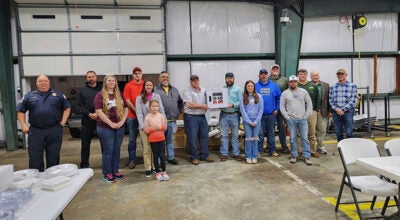Isle of Wight supervisors approve solar farm on Orbit Road
Published 3:46 pm Friday, March 18, 2022

- The Woodland solar farm, pictured, is the only solar farm currently operational in Isle of Wight County. It's located at the corner of Longview and Woodland drives. Stephen Faleski | Windsor Weekly
|
Getting your Trinity Audio player ready...
|
Isle of Wight County’s Board of Supervisors voted unanimously on March 17 to allow a 20-acre solar farm along the south side of Orbit Road.
But Supervisor Dick Grice is now calling for a moratorium on new facilities until at least one of the five solar farms the board has approved over the past five years begins operating.
“We don’t have anything to look at … we don’t know if what we’ve done is good, bad or indifferent,” Grice said.
Nuby Run Solar LLC, a subsidiary of Charlottesville-based Hexagon Energy, had applied for a conditional use permit on behalf of landowner Robert “Ben” Stagg for a 2-megawatt facility.
It is the sixth solar farm Isle of Wight has approved to date — and the smallest. At present, only the Woodland solar farm the board approved in 2015 at the corner of Woodland and Longview drives is operational.
Nuby Run will be roughly three miles south of the Isle of Wight County Courthouse and one mile from the 20-megawatt, 193-acre Solidago solar farm the Board of Supervisors approved in 2018. The Solidago facility is set to begin construction this spring.
Adam Ventre, Hexagon’s director of development, said his company is taking an “all of the above approach” to Virginia’s transition to clean energy by investing in smaller-scale solar farms like Nuby Run. The passage of the Virginia Clean Economy Act in 2020, which mandates the state transition to 100% carbon-free electricity by 2050, has spurred interest among renewable energy companies to partner with landowners in developing solar farms.
The idea behind smaller-scale facilities like Nuby Run, according to company officials, is to allow more people — and localities — to partake in the resulting investments. Currently, the farmland brings the county just over $210 per year in tax revenue, but with the addition of the proposed solar panels, the annual tax revenue would rise to $2,550 — or $76,500 over the project’s estimated 30-year lifespan.
The conditional use permit the board approved included a request to withdraw the 20 acres from the Courthouse Agricultural/Forestal District.
Suchl districts are voluntary creations of county governments that allow landowners special use rates when their properties are assessed for real estate taxes in exchange for a pledge to keep the land in agriculture, forestry or open space use for a set number of years, usually 10.
Stagg’s entire parcel measures 117 acres, but most will remain in either agricultural or forest use. Roughly 6½ acres of trees will need to be cut to reduce shading of the solar panels.
The matter had previously gone before the county’s Planning Commission, which voted 4-3 in favor of the project in January.
Prior to the supervisors’ vote, the board put the matter to a public hearing, which drew two speakers — David Tucker and Stagg.
Tucker referred to himself as a “true advocate of renewable energy,” but not “badly managed” projects, and urged that the proposed solar farm use components made in the United States and employ local people during its construction.
Stagg urged support for the project, calling the proposed solar panels a “reversible use” that would return the land to its present condition at the end of their lifespan.
His family, he said, has owned the land for 150 years, spanning three generations. Stagg plans to retire and use the solar farm to supplement his retirement income.
“I do not want to be the person who tells a landowner, particularly a farmer … that they’re either going to lose the farm or they can’t use it for this, or can’t use it for that,” said Supervisor Joel Acree.
But “at some point in time we’re going to have to hit the pause button,” he said.




